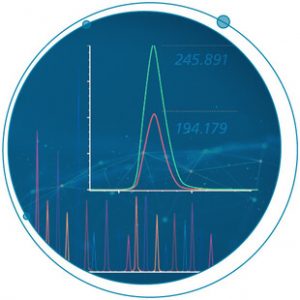 Every decision you make requires a number
Every decision you make requires a number
As a pharmaceutical scientist, you understand the challenges in getting a new drug through the discovery and development pipeline. As an innovation partner in mass spectrometry, SCIEX works continuously with you, our customers, to provide solutions that meet those challenges. Our focus is on getting you the numbers you need to make informed decisions.
Working with complex sample matrices, you need technology that allows you to see everything in your sample, no matter how high or low the levels. Tools that can detect low pg/mL levels (or lower) can analyze a wide mass range of compounds (across five orders of magnitude) and can resolve similar or even isobaric compounds, enable you to get the quality data that allow your lab to move forward. And you need to move quickly, without wasting time on repairs and troubleshooting.
Conquering your challenges
Since the first commercially available electrospray triple-quadrupole instrument, SCIEX has delivered innovative mass spectrometry-based solutions. Today, we continue that legacy of innovation and our commitment to delivering the technology you need to move past the challenges that slow you down.
As we mark the 30th anniversary of the industry-changing API III LC-MS/MS system in 2019, we are revisiting the basics of answering: Why quant? Why SCIEX for quant?? We‘ll examine how our mass spectrometry innovation addresses the challenges you struggle with the most, today– exploring what you need from the technology that helps you achieve your goals. Now, let’s talk a little bit about the four key pillars we use to characterize those goals: Sensitivity, Selectivity, Reproducibility, and Robustness.

Sensitivity
You need a mass spectrometer that sees what’s in your sample. Superior sensitivity is a tool for the situations you face every day:
- Clinical studies of low dosage therapeutics
- High background noise from complex matrices that compromise signal strength
- Low concentration metabolites that give you a complete picture of the metabolism
- Regulatory compliance with required limits of quantitation in validation studies
- Broad mass ranges needed to see all the components in your sample
Read the blog, ‘Sensitivity, It’s at the Very Heart of Who We Are’ >
Selectivity
Powerful selectivity keeps your target compounds from being obscured by unexpected interferences:
- You can separate and identify background or endogenous interferences
- You can distinguish between isobaric target compounds
- You can simplify method development by focusing only on the identified target
- You can confidently identify isolated peaks using a comprehensive library
Read the blog, ‘Detect the Signal, Not the Noise’ >
Reproducibility
Industry leaders discuss their results clearly and with confidence. Knowing you’re presenting reproducible data makes those discussions easier:
- Regulatory compliance
- Confidence in data reporting
- Validation success
- Reduction in the number of repeated experiments
Read the blog, ‘Improving Precision’ >
Robustness
Downtime costs money and keeps you from getting to market on time. A robust system helps solve that problem:
- Minimal downtime
- Return on investment
- Throughput
Read the blog, ‘Robust by Design. Built-in.’ >
To see how SCIEX technology innovations impact pharmaceutical analysis, explore the applications and techniques in our ebook.



0 Comments